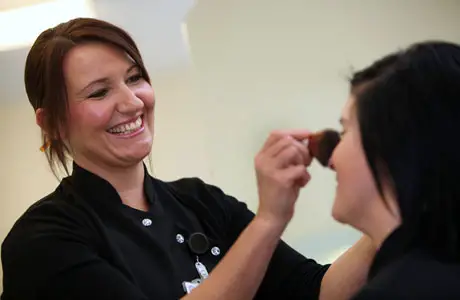Coffee is easily absorbed into the blood through the inside layer of the throat. After half an hour caffeine is present in the bloodstream. It is absorbed first through the lining of the throat and mouth into the bloodstream. Up to 99% of caffeine is absorbed into the blood. Caffeine can survive between 4 to 6 hours in the bloodstream, which is how long effects last.
The metabolism of coffee can be described by three levels in humans.
- Caffeine in the blood is metabolized and broken down by the liver to paraxanthine, theophylline, and theobromine. These chemicals are distributed to the rest of the body and they can affect body functions.
- The metabolism of caffeine depends on some genes. Research shows that genes are responsible for how long the caffeine lasts in the bloodstream. Some people, process caffeine slowly while others need less coffee to achieve the stimulant effects.
- Caffeine has effects on the brain in that it is similar to adenosine molecule which is a role player in the sleep-wake cycle. Caffeine hinders the adenosine though it sends a signal to the brain it is time to sleep it is no longer able to produce symptoms such as drowsiness which force one to sleep.
Why does coffee cause headaches?
Ironically the main ingredient of coffee, caffeine is mostly used in popular pain relievers. Caffeine alone sometimes stops the pain in its tracks by reducing inflammation. How then does it cause headaches? Caffeine narrows the blood vessels which surround the brain. When you stop taking caffeine the vessels start to expand again and this causes the pain.
The five main causes of headaches in coffee are
- Coffee/ caffeine withdrawal -the smallest decline of caffeine intake in the body could trigger a mild headache.
- Varied caffeine consumption – these are people who consume caffeine in a hit and miss style. They take too much at one time and the next time they take less. They are vulnerable to headaches than others who take the same amount of coffee daily.
- Caffeine overdose – too much consumption of coffee within a short time causes headaches.
- Caffeine sensitivity – there are people who are ultra sensitive to caffeine.
- Caffeine allergy – allergy-like reactions which cause headaches.
How to wean off coffee without getting a headache?
The main issue is kicking coffee out of your routine and system without triggering withdrawal symptoms such as headaches. Planning ahead makes it easier for you mentally. Finding a motivation as to why you are giving up coffee could be a great way to stay focused on the main goal which is weaning off coffee. The effects of coffee on the general body health, the damage to the digestive processes and its effects on the sleep-wake cycle of the body should motivate you enough to drop it.
Steps
- Prepare in advance when you are going to stop and ideally start when you are off work or situations which automatically force to take coffee. Over the weekend could work for you.
- Immediately after waking up, take a red ginseng tincture extra strength version. It is energizing and takes off the tired feeling.
- Take a shower and rub magnesium oil, at first it stings, but it is relaxing. Magnesium is a natural relaxant of the nervous system and muscles and it supports body functions such as detox. Magnesium gives the body a boost for its metabolic functions.
- Take some ginger tea or any other healthy version of the caffeinated drink.
- Take a healthy breakfast with various fruits.
- During lunch, take a ginseng drink.
- Replace coffee with herbal tea or green tea.
- Take lots of water to flush out toxins and prevent the brain from headaches.
- Eat healthy to acquire energy from food.
- Take peppermint tea in case of a headache. Peppermint is a natural remedy for headaches.
- Trying to cut coffee leaves you tired, so be in a position to take a nap whenever you are too tired.
- If you feel cloudy and sluggish take some extra vitamin C and lots of water.
Example
Week 1:
First day: take the usual amount of coffee.
Day two, three, four and five: blend 50% certified organic decaf coffee with the regular coffee
Day six: blend 25% of the regular coffee with 75 % of the decaf coffee.
Day seven: have pure decaf coffee.
Week 2:
Continue with the organic decaf
Week 3:
Start blending the decaf with another preferred non-caffeinated beverage. Slowly reduce the decaf and by the end of the week, you will be taking non-caffeine beverages.
After this, you will realize that your body no longer needs coffee or coffee substitutes to function.
If all methods to ease a headache fail, discuss with your doctor about the use of the pain relievers.

